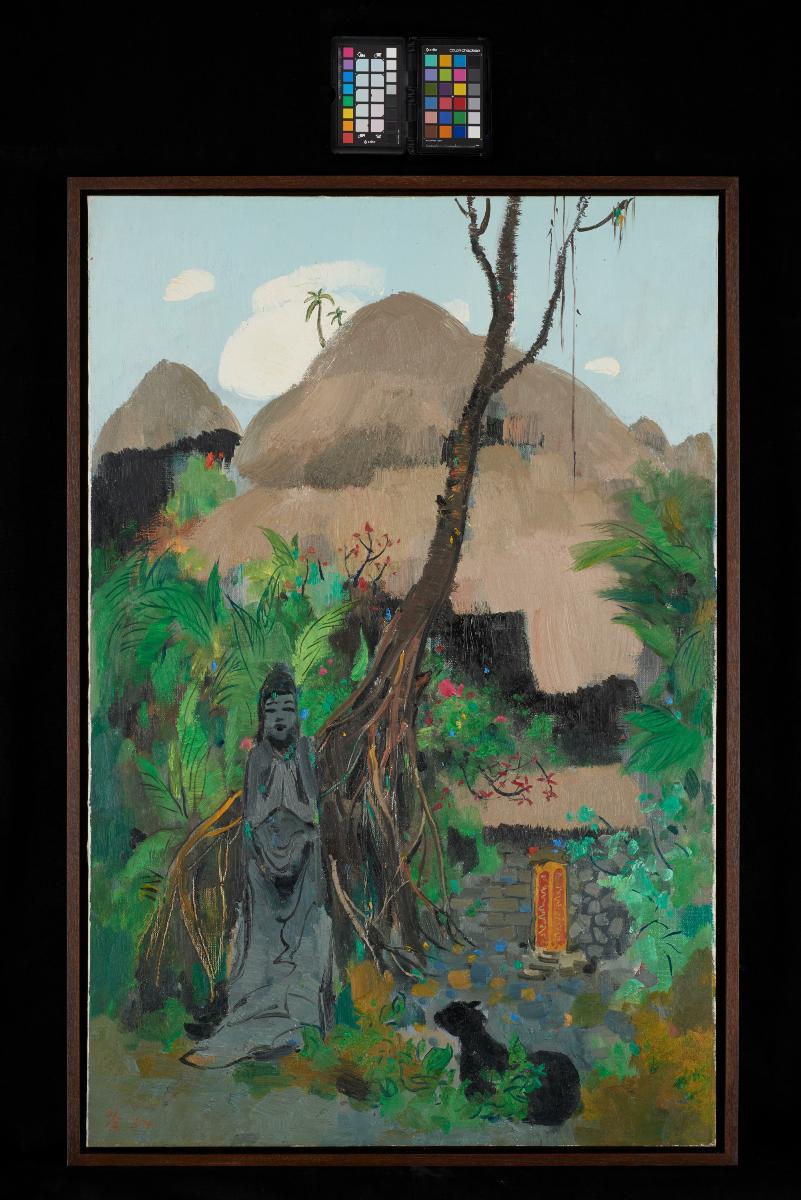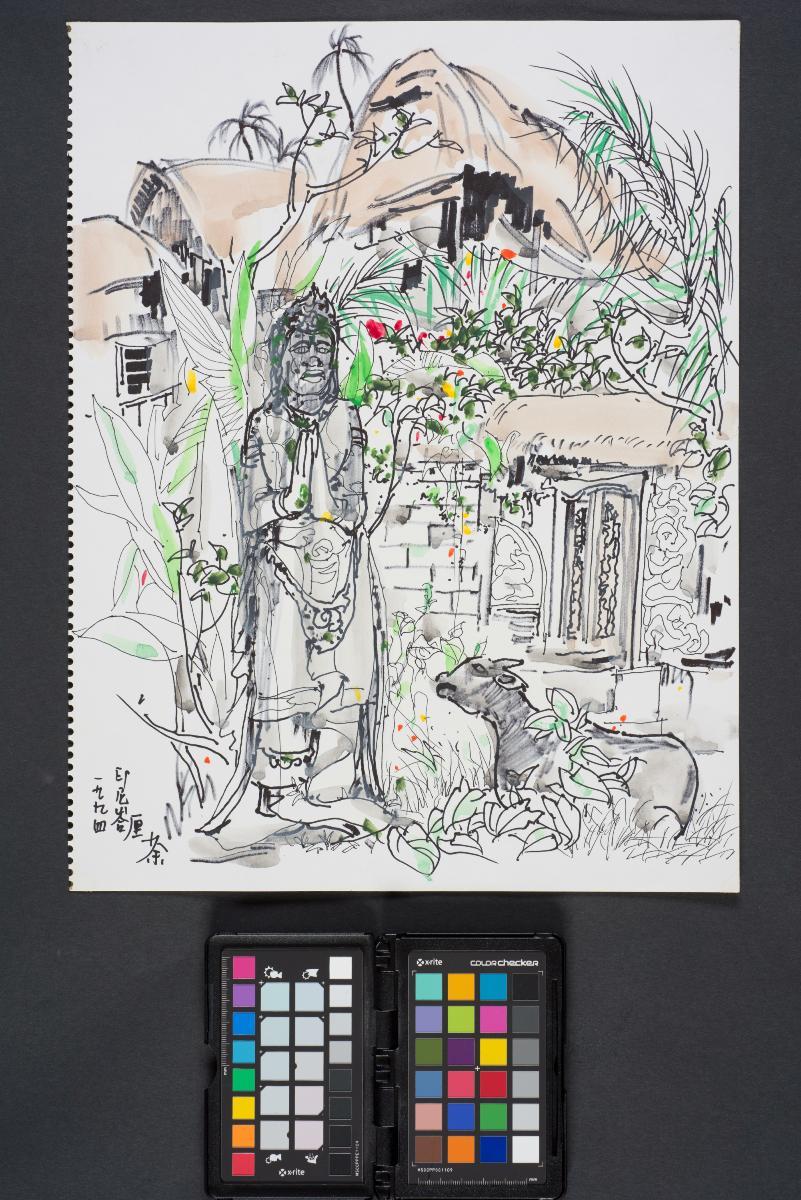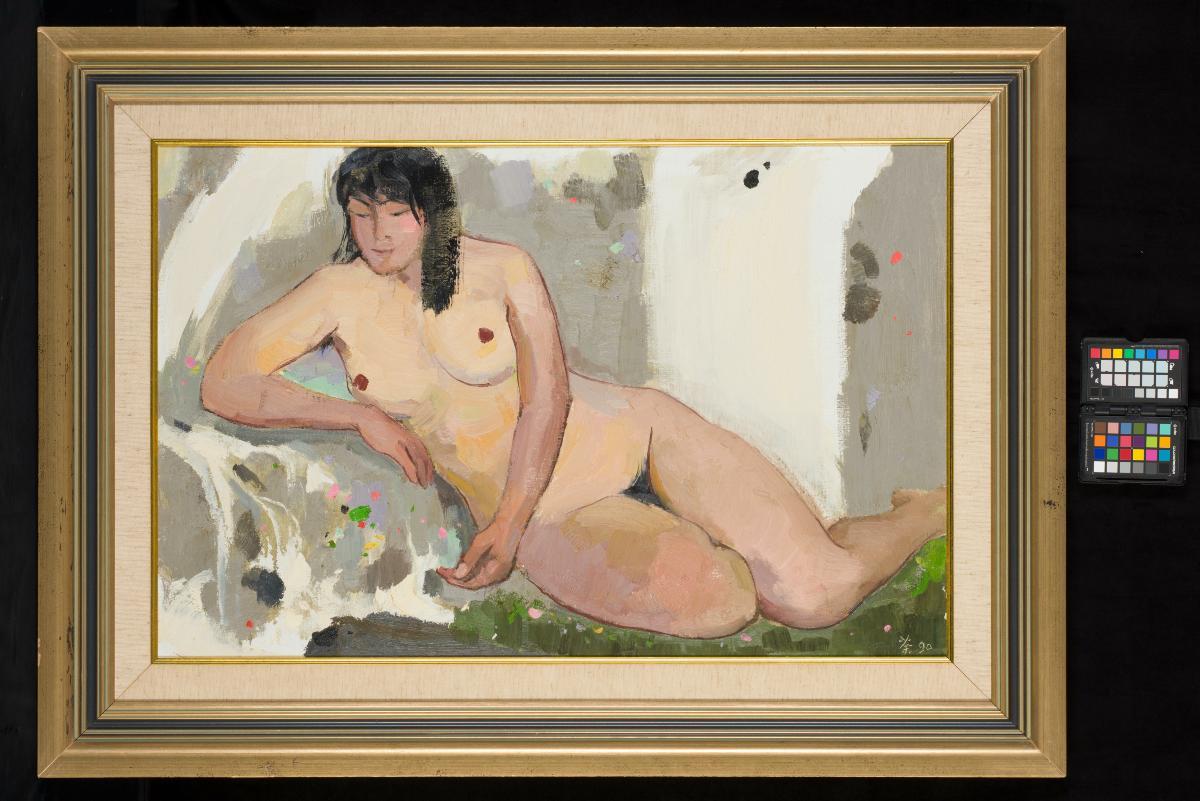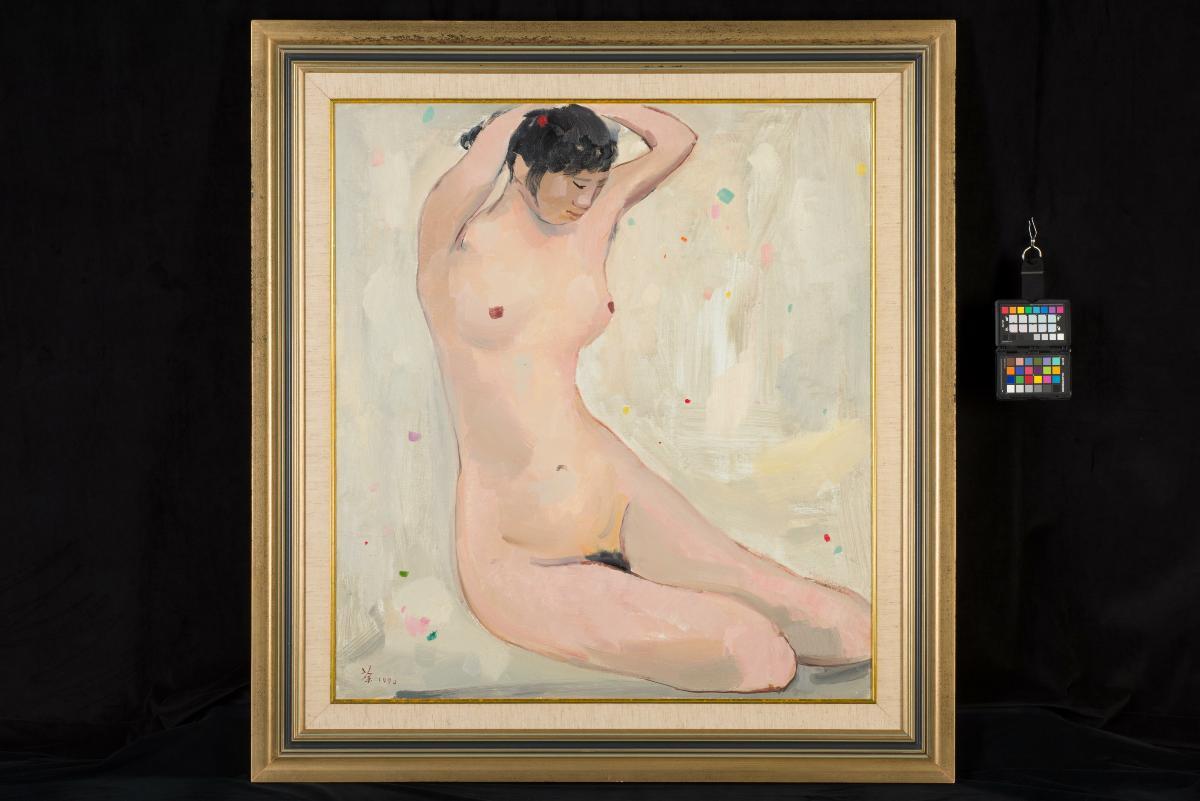Strongly linked to his modernist training in Hangzhou National Academy and later in Paris, Wu’s distinctive oil paintings deviated from the Soviet-model socialist realist art which dominated the Chinese art world in the post-1949 periods. Painting in the oil medium, Wu Guanzhong’s concise composition, vivid brushstrokes and lucid tonal application captured the spirit resonance of traditional Chinese aesthetics. In Wu Guanzhong’s ink practice, he boldly abandoned traditional brushwork and adopted instead formalistic principles in Western modernism. His pictorial construction extended beyond physical figuration into the rendition of dots, lines and planes, resulting in a variety of rhythmic visual spaces. Wu’s skilful deployment of linear strokes, ink marks and black and white tones are derived from his deep understanding of traditional ink painting. Drawing inspiration from Chinese folk art, Wu used vibrant red, yellow and green to enliven his images. Wu’s creation opened up a modern realm for traditional ink medium while staying true to the unique spirit of ink aesthetics.















